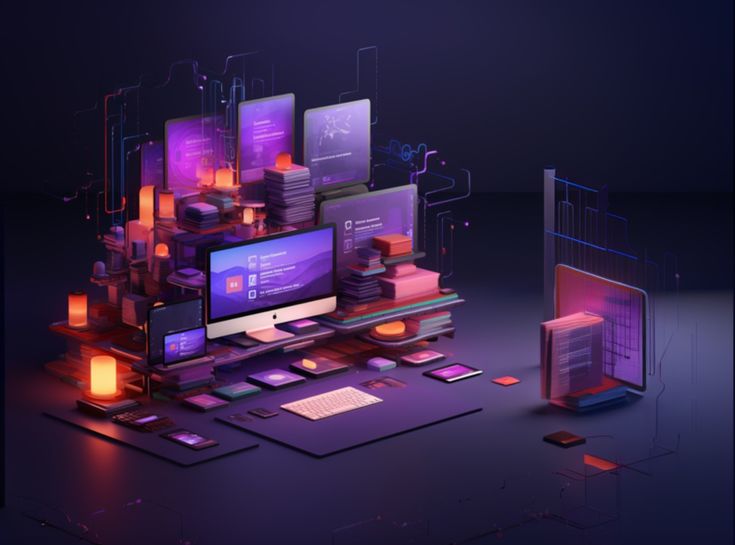Master Full-Stack Development with Ezy Interviews – Code Like a Pro
Full-stack development is one of the most in-demand skills in the tech industry today. Companies are constantly looking for developers who can handle both front-end and back-end development efficiently. However, cracking full-stack developer interviews requires a solid understanding of various technologies, frameworks, and problem-solving skills.
If you’re an aspiring full-stack developer preparing for interviews, Ezy Interviews can be your secret weapon! In this article, we’ll explore the essentials of full-stack development, common interview questions, and best practices to ace your next coding interview.
What is Full-Stack Development?
A full-stack developer is responsible for both the front-end (user interface) and back-end (server, database, APIs) of a web application. This means mastering multiple technologies, including:
1. Front-End Development:
- HTML, CSS, JavaScript
- Frameworks like React, Angular, or Vue.js
- Responsive design with Bootstrap or Tailwind CSS
- State management (Redux, Context API, etc.)
2. Back-End Development:
- Server-side languages: Node.js, Python, Java, or PHP
- Frameworks: Express.js (Node), Django (Python), Spring Boot (Java)
- Database management: SQL (MySQL, PostgreSQL) & NoSQL (MongoDB)
- Authentication & security: JWT, OAuth, bcrypt
3. DevOps & Deployment:
- Version control with Git & GitHub
- CI/CD pipelines (Jenkins, GitHub Actions)
- Hosting platforms (AWS, Heroku, Vercel, Netlify)
- Docker & Kubernetes basics
A strong foundation in these areas will help you develop scalable and secure applications.
Common Full-Stack Developer Interview Questions
To excel in full-stack interviews, you need to be ready for technical, logical, and practical questions. Here are some commonly asked questions and how to tackle them:
1. Front-End Questions
How does React’s virtual DOM work?
- React’s virtual DOM is a lightweight copy of the actual DOM. When a change occurs, React updates only the necessary parts, improving performance.
What is the difference between local storage, session storage, and cookies?
- Local Storage: Stores data with no expiration.
- Session Storage: Data is cleared when the session ends.
- Cookies: Can store small amounts of data, with an expiration date.
How do you optimize a web application’s performance?
- Minify CSS/JS files
- Use lazy loading
- Optimize images
- Implement caching
2. Back-End Questions
Explain RESTful APIs and their principles.
- REST (Representational State Transfer) is an architectural style using HTTP methods (GET, POST, PUT, DELETE) to interact with resources.
What are microservices?
- Microservices break down an application into smaller, independent services, improving scalability and maintainability.
How do you handle authentication and authorization?
- Use JWT (JSON Web Tokens) for stateless authentication.
- Implement OAuth 2.0 for third-party logins.
- Store hashed passwords using bcrypt.
3. Database & System Design Questions
SQL vs NoSQL – When to use which?
- Use SQL for structured data and complex queries.
- Use NoSQL for flexible, high-velocity, scalable applications (e.g., social media, real-time analytics).
How would you design a URL shortener like Bit.ly?
- Use a database with a hash function to map long URLs to short ones.
- Implement a caching layer (Redis) for fast lookups.
- Design a scalable API with rate-limiting.
Explain database indexing.
- Indexing speeds up data retrieval by creating a structured order for the database.
Best Practices to Crack Full-Stack Developer Interviews
1. Build Strong Fundamentals
- Practice coding daily on platforms like LeetCode, HackerRank, and CodeSignal.
- Master data structures and algorithms (arrays, linked lists, trees, graphs).
2. Work on Real-World Projects
- Develop a portfolio with projects showcasing front-end, back-end, and database skills.
- Examples:
- A Task Manager App with React and Node.js.
- A Blogging Platform with authentication and CRUD operations.
- An E-commerce Website integrating Stripe for payments.
3. Improve Problem-Solving Skills
- Solve at least one coding problem daily.
- Understand time complexity and space optimization.
4. Learn DevOps & Cloud Deployment
- Set up automated pipelines for deployment.
- Deploy applications on AWS, Firebase, or Vercel.
5. Mock Interviews & Communication Skills
- Conduct mock interviews with peers or use platforms like Pramp & InterviewBit.
- Clearly explain your thought process while solving problems.
Practical Takeaways
- Master front-end and back-end frameworks like React, Node.js, and databases like MongoDB.
- Solve coding challenges regularly to improve problem-solving skills.
- Work on real-world projects to demonstrate your expertise.
- Understand system design concepts for high-level discussions in interviews.
- Practice mock interviews to enhance confidence and clarity in communication.
With the right preparation and hands-on experience, you can master full-stack development and crack interviews with Ezy Interviews like a pro!
Conclusion
Becoming a full-stack developer requires continuous learning and practice. Stay updated with the latest technologies, contribute to open-source projects, and keep building! If you’re preparing for an interview, start coding today and take the first step toward your dream job. Happy coding!
